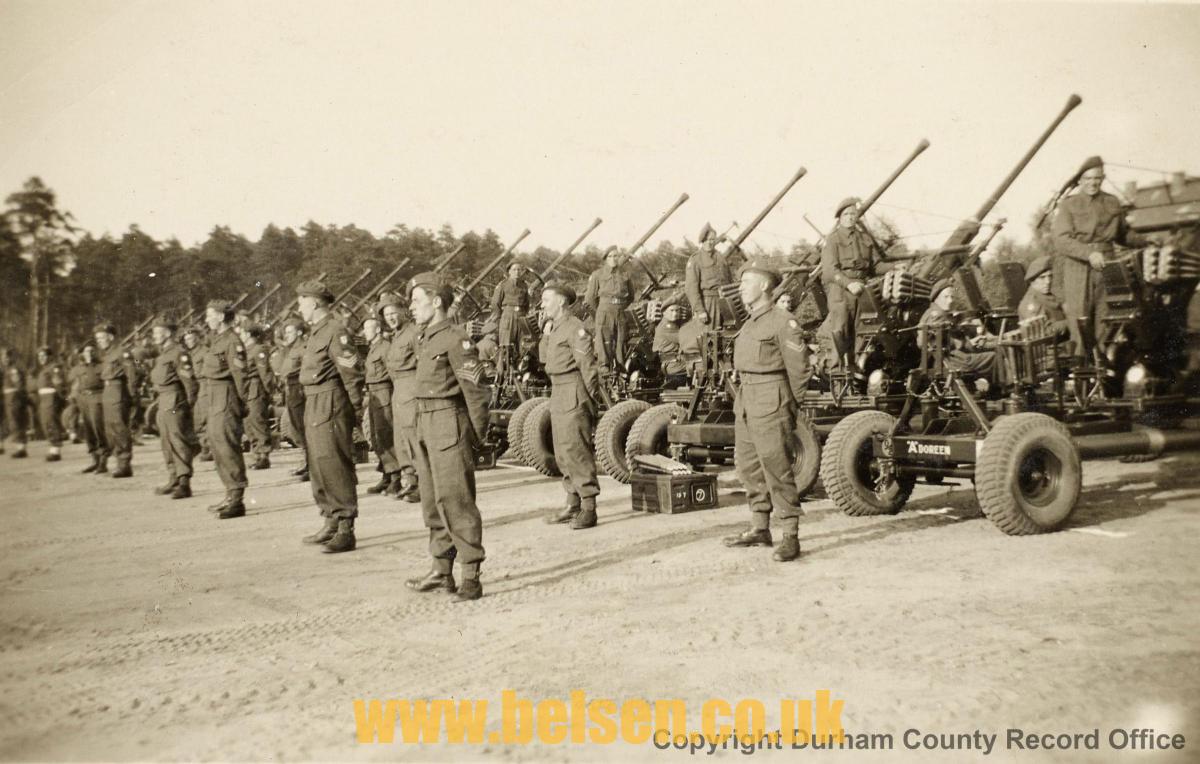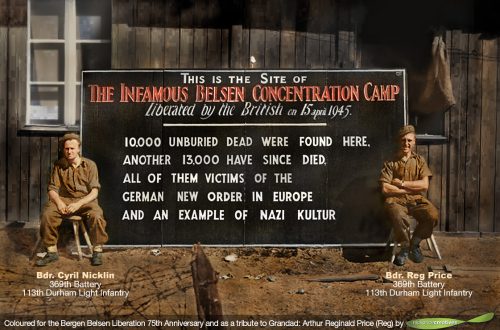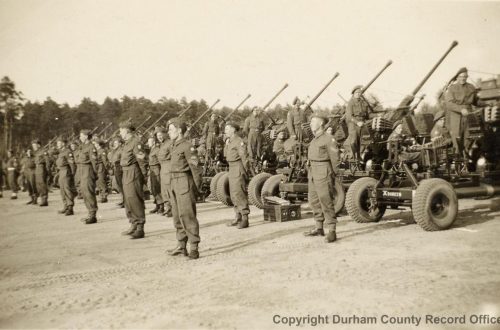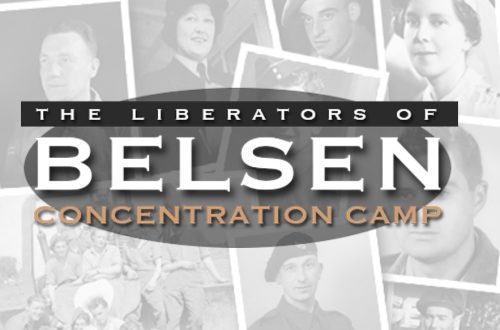The Heroes of Belsen
The Heroes of Belsen
“If you asked them to build a battleship overnight they’d produce it for you at breakfast!” Such are the expressions of praise made by Army authorities when referring to the magnificent work of relief done by officers and men of the 113th Light Anti-Aircraft Regiment, RA at Belsen Concentration Camp.
It was to the Gunners and to the RAMC with whom they workedhand-in-hand, that the British Commander referred when he spoke of the work of the British Soldier at Belsen in these term –“His great heart, his patience, his sympathy, and his sense of humour have always made him the finest ambassador that any nation could wish for. He has been a great ambassador at Belsen”.
The 113th LAA Regiment, receiving orders to proceed to Belsen Concentration Camp, arrived there on 18th April, within 48 hours of the liberation, after covering 238 miles in 24 hours. From that moment, until it left for a rest on the Baltic coast on 24th May, the Regiment, some 900 officers and men, provided the main source of man power for the huge and complex task of relief set the British authorities. The first objective was to get the dead buried; the second to get the cookhouse running, and the third to ensure even distribution of the food and that the sick were fed. This last was the greatest problem and was Bergen-Belsen Concentration Camp not achieved until the arrival of the London medical students.
The overall plan was to create a vast hospital area and reception areas in the huge Panzer Training School situated only half mile from the Concentration Camp. The existence of this place, permanent brick buildings capable of housing a whole Army Division, was the only alleviating feature in a gigantic problem. Without it the task might have been overwhelming. Under RAMC control, and supervised by Military Government, officers and men of the 113th began the evacuation of the fit, the removal to the hospital areas of those who had a chance of survival and the typhus cases, and the burying, feeding, and establishment of order out of chaos.
Every man worked heart and soul with little respite, all available manpower in the Regiment being concentrated on the task. All at first laboured in the Concentration Camp itself, under their Battery Commanders –Major PE Murrell, Major C P Sharp and Major K G Taylor. Captain A Pares was largely responsible for the surmounting of the horrible and immense task of burying the 10-12,000 dead, using the SS caught in the camp to clear and bury the corpses and Hungarian soldiers to dig the vast burial pits.
As the evacuation began the Batteries commanded by Major Sharp and Major Taylor moved to the Training School to prepare for, receive, house, feed, bath and clothe the thousands as they were brought into the reception areas. Major Murrell’s men remained responsible for the Concentration Camp itself right to the completion of the evacuation on 18th May and the rasing of the area to the ground by fire.
Incredible jobs were done with incredible spirit by these North countrymen. Amongst them was the carrying out of women so weak that they collapsed under the warm water showers provided by them.
Sergeant A Griggs worked all day long supervising the bathing, and the issue of clean clothes and footwear to these unfortunate victims of Nazi hate. By the 18th May the last evacuations from the Concentration Camp –a total of 29,000 were brought out alive –were completed; all had been housed and cared for, clothed and fed, either in the hospital area by the RAMC or in the reception area by the men of the 113th Regiment with Military Government supervision. Within a few days those fit enough were on the long journey home. All had been saved and reinstated as human begins in less than five weeks. That is the amazing achievement in which the 113th LAA Regiment played so great a part.
Afternote.
On VE Day 8th May 1945 the Regiment paraded through the Camp. The 54 guns of the Regiment fired ten rounds single shot and ten rounds automatic to celebrate victory and peace in Europe. At this point their work was only half complete. After the last huts of Belsen Camp were burned, a short ceremony was held on 23 May 1945. After the traumatic work, 113th LAA Regiment were given ten days leave on the Baltic Coast and issued 6,000 bottles of beer.
Even after all these years, I am sure you will agree with me this article from The Gunner in July 1945 really highlights what a harrowing job the men of 113th LAA Regiment did at Bergen-Belsen as the war in Europe drew to a close. Research has also identified that Major PE Murrell and Captain A Pares were appointed the MBE, published in the London Gazette on 18 October 1945.
15,424 total views



